Dear Artist,
Growing up, my Dad would tell us about the importance of the secondary easel. This is an easel in the corner of your studio, or a wall in your home, where you can catch nearly finished work out of the corner of your eye and let it tell you what it needs. The secondary easel is a place for creative vision, contemplation, advancement of concepts and your own cut-throat critique.
Recently, Delphine Oudiette, a sleep researcher at the Paris Brain Institute, thought to study another technique long-used by artists to boost creative insight. In an effort to capture a very short-lasting stage of sleep called hypnagogia, or N1 – that period between being awake and being fully asleep – Salvador Dalí would hold a spoon in his hand as he drifted off. As he fell asleep, his hand would release the spoon, which would land on the floor and wake him. At this point, he’d jump back to work.
According to Dalí, these few minutes between being awake and being fully asleep were a place of blended fantasy and reality and problem solving. To test this theory, Oudiette and her team set up an experiment where non-artist participants were presented with math problems that included a numerical sequence with a missing last digit. If participants could figure out this digit, it would reduce the amount of time it took to solve the problems. After solving a handful of problems, the participants were invited to take a nap in a chair, while holding a cup, while being monitored by an electroencephalogram to make sure they didn’t drift from N1 into the deeper sleep of N2. After their rest, they were presented with more math, only this time, 83% of them discovered a hidden rule for finding the last digit in the numeric sequence. For those who stayed awake during naptime, 30% discovered the new rule. For those who fell thoroughly asleep, the effect completely disappeared.
Sincerely,
Sara
PS: “The only difference between the two groups is one minute. That’s kind of a spectacular result.” (Delphine Oudiette)
“To gaze is to think.” (Salvador Dalí)
Esoterica: Here’s an idea: Consider a catnap in the middle of the most creative portion of your studio time. Sit in a comfortable chair and hold a light object that will make a noise when you drop it. Stare at what’s on your secondary easel until your eyes grow heavy. Pay attention to the sounds in your room – apparently it’s important to be conscious of being awake until you’re not. When I tried it yesterday, I saw my current paintings grouped vertically as a chess board. When my spoon dropped, I woke up and wondered if the pleasure we take in preferential arranging and rearranging is superceded by another human impulse to strategize. Or perhaps paintings are pawns. I’m still thinking. “I am the first to be surprised and often terrified by the images that I see appear on my canvas,” wrote Dalí. I welcome your own results in the comments below.
Have you considered a Premium Artist Listing? With each letter, an artist is featured at the bottom of this page. The Premium Artist Listings are a means of connecting artist subscribers through their work. Proceeds from each listing contribute to the production of The Painter’s Keys.
“I seated ugliness on my knee, and almost immediately grew tired of it.” (Salvador Dali)
Featured Workshop
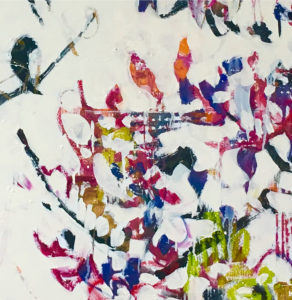 Join Ellie Harold for “Intuitive Painting: Permission to Paint Expressively,” designed especially for mature women artists of all skill levels who wish to explore this medium for soulful exploration. The retreat provides attractive accommodations (your own room!) along with lightly structured activities for centering, relaxation and low stress art-making. You’ll have plenty of free time to muse, paint, write and reflect while enjoying the colors, textures and flavors of San Miguel. This Retreat has the potential to transform not only your art but your life! You’ll return home with a specific art “care plan” to assure support for further creating. Details at www.EllieHarold.com.
Join Ellie Harold for “Intuitive Painting: Permission to Paint Expressively,” designed especially for mature women artists of all skill levels who wish to explore this medium for soulful exploration. The retreat provides attractive accommodations (your own room!) along with lightly structured activities for centering, relaxation and low stress art-making. You’ll have plenty of free time to muse, paint, write and reflect while enjoying the colors, textures and flavors of San Miguel. This Retreat has the potential to transform not only your art but your life! You’ll return home with a specific art “care plan” to assure support for further creating. Details at www.EllieHarold.com.
Featured Artist
Sometimes we see what no one looks for–images that have waited for us to find them. If we are lucky, these images will wait while we try to capture them with paint on canvas. They will probably change as we reach for them. I believe that if we clearly and honestly record what we see, we will be surprised, enriched, and sometimes stunned by what we’ve found.
There is almost always a narrative in my paintings as I believe that a story may be introduced in a scene. The viewer must fill in the before and after with unique eyes and experience, but enough can be presented to set a challenging stage if the work is successful.
Along with being a visual story teller, I’ve been called a colorist, surrealist, patternist, and sometimes a texturist. I’m an Atlanta artist–an oil painter for over twenty-five years–with a studio in Brookhaven. I love working with oils because each painting session results in a new revelation of what they might do. There is a mystical quality to each painting and each day for me.

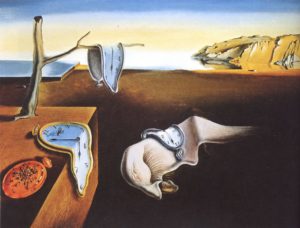
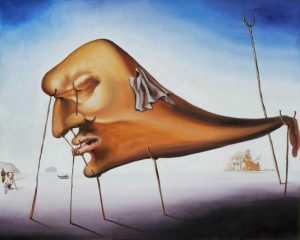
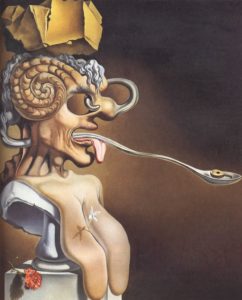
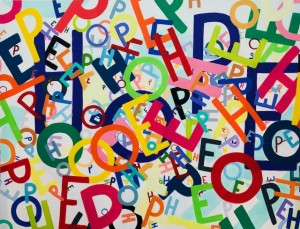
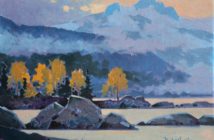
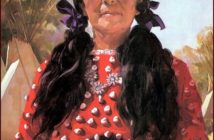
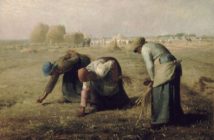
14 Comments
You always bring valuable insights and new wisdom. Thank you.
It has been said that subconsciousness is about 85% ,(same as an iceberg) and that is where dreams, premonitions , etc. come from
Thanks, this is great, I am going to pursue this. It is something that I have been somewhat aware of for a while but not had any coroborating thoughts presented to me.. so, again, Thanks!!
Dali did have a lot of interesting ideas – it’s insightful to hear the science back it up. Last week a new edition of a favorite podcast of mine was released – about Dali and some of his ideas. Great timing on this additional insight. If you’re interested in the podcast… https://podcasts.apple.com/us/podcast/the-charmed-studio-podcast-for-artists/id1508879926
Brilliant insight as usual from your late father. Your art always needs a second or perhaps even a tenth look. Artists have many variations on the ‘second easel’ technique – look at a painting upside down, in a mirror, in a different location, put it away for a few months. Usually the solution is simple but you can’t see it while you are too involved in the painting. 50 years ago the great Canadian painter, Tony Onley, stood behind me while I was painting during a workshop. After a few mom he told me I was trying to make the painting too complicated. “Paintings get complicated all by themselves.” It was the bet advice I ever received.
For a number of months I was experiencing frustration with the sound of numerous loud voices coming from the unit above me in my condo. I could not tell whether whoever lived above was turning on the t.v. news in the middle of the night, or whether the tenants were having a cocktail party. As it went on and on, and was having an upsetting effect on my sleep, I spoke with the folks who lived above and below me. No t.v. news. No parties. No gatherings . Turns out I was experiencing aural hypnogogic hallucinations. Who knew? The good news is that once you recognize what they are, you can call them out and they will go away!
I guess I don’t get it. Do we want to paint from the subconscious? I know it always gets to play a part, but I’d rather encourage the higher mind.
I have used this technique for many years although not in the short version as DAli described. Icall it putting the problem in the back of my head. Often it is bout a problem i’m having with a painting but it can be about a personal problem. I go to sleep with idea on my mind and usually I wake with the answer to my problem. Now, I will try it in the studio as well. Thanks Sara.
After practicing “I’ll sleep when I’m dead!” for 34 years as a journalist, cat naps and brainstorms in the wee hours of the morning have inspired my life as an artist. Both the Love of my Life, who is turning into a gourmet cook (more time for me to create!), and I have changed our diet, given each of ourselves individual time each day, and encourage each other in our newest lives. Love it? Yes!
The New Scientist featured an article on this very topic several decades ago. The author set the reader a couple of puzzles to solve, both quasi-mathematical. The first was a sentence that needed completion with one word. The other I remember rather well. Both answers came to me in that unique N1 spot, the answer to the second revealing itself in dazzling electric blue. The puzzle was to create four equilateral triangles with six matchsticks. Dream on.
I read years ago that Edison did this by holding a small tennis ball and often found insight in his experiments.
Along that vein, when I had to write papers, I would take a nap after hand writing all my notes into an outline. Later the writing flowed much easier, magically organized.
In a similar line, I have often wondered, worried, about the act of walking around and doing normal things while being in a state of soft sleep where our expectations of what is around us preclude realizing what has changed. I seldom draw on location, but I realize the potential for actually seeing is greater when presented with something different. Thanks.
This is quite interesting. I can often hold in my mind a painting I have done the same day when I retire for the night. I do not awake suddenly and correct the painting, but the next day I can see it with fresh eyes and mind and see how to make it better or to start over. Sometimes it doesn’t work. Maybe a second easel would work better.
thanks so much . i copied 4 parts of the article esp. the quotes of other artists of merit..
will try this in my art… as it is my art is taking on a higher level of spiritual reality, where it really belongs for me for the rest of my life.